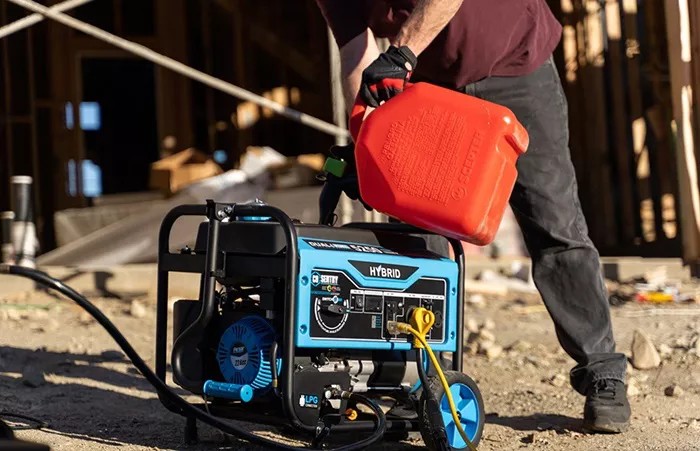Yobolife solar generators are great for various power needs, whether it’s for home backup during outages or powering your gadgets on an outdoor adventure. But how can you ensure that your Yobolife solar generator functions at its best and provides the maximum power supply? Let’s explore some practical tips.
Optimal Placement of Solar Panels
Maximize Sun Exposure
The solar panels of your Yobolife generator need to capture as much sunlight as possible. Place them in an open area where there are no obstructions such as trees, buildings, or large objects that could cast shadows. For example, if you’re using it at home, the roof is often an ideal location as it’s usually free from ground – level obstacles. If you’re outdoors, choose a spot in the middle of a clearing. Even a small shadow can significantly reduce the power generation. Remember, the more sunlight the panels receive, the more electricity they can convert for your generator to store and use.
Angle and Tilt
Adjust the angle and tilt of the solar panels according to the time of day and your geographical location. In general, for maximum sunlight absorption, the panels should be tilted at an angle approximately equal to your latitude. You can use simple tools or online calculators to determine the optimal angle for your area. During the morning, when the sun is low in the east, tilt the panels slightly towards the east. As the day progresses, adjust the tilt to face the sun more directly. This way, you can make the most of the sun’s rays throughout the day, enhancing the power – generation efficiency of your Yobolife solar generator.
Battery Management
Charge Regularly
Keep your Yobolife solar generator’s battery charged regularly. Even if you’re not using the generator frequently, it’s a good idea to let the solar panels charge the battery when sunlight is available. This helps maintain the battery’s health and capacity. Batteries that are left in a discharged state for long periods can experience a phenomenon called sulfation, which reduces their overall performance and lifespan. By keeping the battery charged, you ensure that it’s ready to provide power whenever you need it.
Avoid Over – Discharge
It’s crucial to avoid over – discharging the battery. Most Yobolife solar generators have built – in protection mechanisms to prevent this, but it’s still something to be aware of. Once the battery level reaches a certain low point, stop using the generator until it’s recharged. Over – discharging can damage the battery irreversibly and significantly shorten its lifespan. For example, if you notice that the generator’s power output is starting to weaken and the battery indicator shows a low level, it’s time to connect it to the solar panels for recharging.
Power – Consumption Awareness
Match Load to Generator Capacity
Be mindful of the devices you connect to your Yobolife solar generator. Make sure that the total power consumption of the devices you’re running does not exceed the generator’s capacity. Check the wattage ratings of your appliances and electronics. For instance, if your Yobolife solar generator has a maximum output of 300W, don’t try to run a 500W microwave on it. Running high – wattage devices that exceed the generator’s capacity can cause the generator to overheat, trip its internal protection circuits, or even damage the generator. Instead, prioritize essential and low – wattage devices during power – limited situations.
Unplug Unused Devices
When not in use, unplug any devices connected to the Yobolife solar generator. Even when in standby mode, many electronics consume a small amount of power, known as vampire power. This continuous draw of power can gradually drain the generator’s battery. For example, if you’ve finished charging your phone, unplug the charger. By eliminating these small power drains, you can ensure that the generator’s battery power is conserved for when you truly need it.
Maintenance and Care
Keep the Panels Clean
Regularly clean the solar panels of your Yobolife generator. Dirt, dust, leaves, and bird droppings can accumulate on the panels over time, reducing their ability to absorb sunlight. Use a soft cloth or a gentle brush and clean water to wipe down the panels. Do this at least once a month, or more frequently if the panels are in a particularly dirty environment. A clean panel surface allows sunlight to reach the photovoltaic cells more effectively, improving the overall power – generation efficiency of the generator.
Inspect for Damage
Periodically inspect your Yobolife solar generator for any signs of damage. Check the solar panels for cracks, chips, or loose connections. Examine the generator’s casing for any dents or openings that could expose the internal components to moisture or debris. If you notice any damage, address it promptly. For example, if you find a crack in a solar panel, it’s best to replace the panel as soon as possible to avoid further degradation of the generator’s performance.
Conclusion
To make the most of your Yobolife solar generator’s power – supply capabilities, it’s essential to pay attention to several key aspects. From ensuring optimal placement of the solar panels to proper battery management, being aware of power consumption, and performing regular maintenance, these steps can significantly enhance the performance and longevity of your solar generator. By following these tips, you can rely on your Yobolife solar generator to provide a reliable and efficient power supply for all your energy needs, whether at home or on the go. However, always refer to the user manual provided by Yobolife for specific instructions related to your model for the best results.

